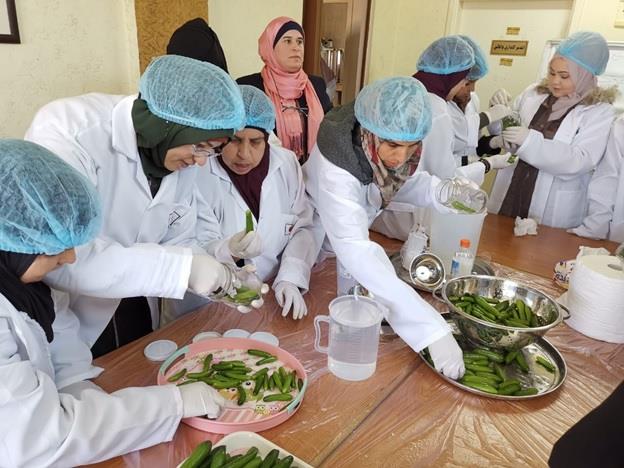Strengthening the livelihoods of Syrian refugees and Jordanian host communities

©FAO/ A three-year plan that seeks to address the needs and vulnerabilities of Syrian refugees and Jordanian people, communities and institutions affected by the crisis.
27 March 2019, Amman - The Food and Agriculture Organization (FAO) and officials from the Japan Embassy in Jordan, attended a food processing exhibition organized by Syrian refugees and vulnerable Jordanian communities hosting the refugees.
The exhibition took place in Zarqa was also attended by the Ministry of Agriculture/National Center for Agriculture Research and Extension, and several local community board members association. Similar exhibitions also took place in Irbid, and Mafraq governorates.
The FAO Representative was impressed by the vast number of foods on display and the high quality of the products at the exhibition.
The exhibition was part of a broader undertaking to strengthen the livelihoods of Syrian refugees and their Jordanian host communities. The efforts are being championed by an FAO project, funded by the Government of Japan entitled - "Social Stability and Resilient Livelihoods for Syrian Refugees and Vulnerable Jordanian Farm Families from Hosting Communities."
It also directly responds to the objectives of Jordan's Response Plan (JRP) a three-year plan that seeks to address the needs and vulnerabilities of Syrian refugees and Jordanian people, communities and institutions affected by the crisis.
The project is protecting the livelihoods of 3 000 people in Irbid, Mafraq and Zarqa Governorates. Through the establishment of home-based and group-based agri-food enterprises, the project is working to strengthen food and nutrition security. It also aims to boost household income, enhance development skills and create employment opportunities.
One of the woman producers commented on her appreciation of the training, the equipment and the entire process of support and how she is eager to be one of the selected winners so she can establish a small business.
More than 50 percent of the direct beneficiaries are female members of rural and peri-urban households.
The exhibitions were organized in partnership with the Business Development Center (BDC) that trained the beneficiaries on marketing and commercialization skills and conducted the exhibitions. BDC helped to design a packaging label identity for all beneficiaries and invited buyers and shops like Hypermarkets, Supermarkets, small shops, wholesalers, restaurants, catering and food services establishments and hotels, to make linkages with beneficiaries and commercialize their products.
The exhibitions have provided an opportunity for small producers to engage directly with the buyers.
